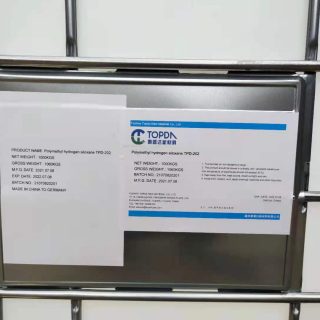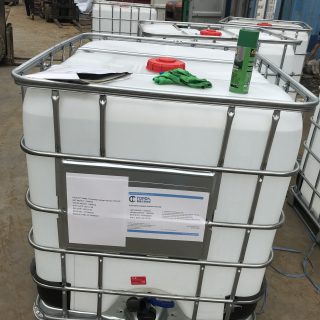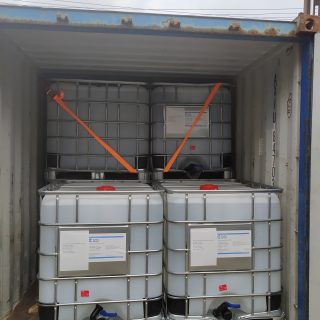Description
Other Names: Methyl hydrogen silicone fluid; Methyl hydrogen silicone oil; Methyl hydrogen polysiloxane
Equivalent Brand: Wacker SILRES BS94
Cas No.: 63148-57-2
Chemical Structure:
![]()



Polymethyl Hydrogen Siloxane TPD-202 is nontoxic and insipid. As there are fair quantity of relatively active Si-H bonds inthemolecule, under the action of catalysts it can react with chemicals containing active groups, such as double bonds or hydroxyl groups.
Polymethyl Hydrogen Siloxane TPD-202 can be converted into film and used to produce a resilient waterproof coating on various materials by using metal salt catalyst at low temperature. It equips itself with outstanding water repellent property which prevents damage due to moisture, as well as mildew and rust development. Besides, its high vapor permeability allows the material to breathe and let water, vapor escape to the outside without causing damage.
Features
- EU REACH Registration
- Colorless and odorless
- High hydrogen content, low VOC
- Good film-forming property
- No acid precipitation
Technical Index
| Item | Typical Value |
|---|---|
| Appearance | Colorless and odorless transparent liquid |
| Viscosity(at 25°C, mm2/s) | 20-30 |
| Hydrogen Content,% | 1.58-1.60 |
| pH Value | 6.0~7.0 |
| Volatile Content: (150°C, 3H), % | <3 |
| Flash Point, °C | >160 |
Applications
1.Mainly used as water repellent for gypsum, powders, glass, ceramic, leather, paper, metal, cement and marble.
2.Widely used in the finishing of all kinds of fibers such as cotton, hemp, silk, nylon, polyester.
3.Used as the cross linker for additional type silicone rubber series.
4.Used as the basic material and a fundamental intermediate to synthesize some modified silicone oil including polyether modified silicone oil and alkyl based modified silicone oil.
5.Used as hydrophobic agent, lubricant and antisticking agent of oily based foundation of cosmetics.
Packing
N.W 200KG hard plastic barrel or 1000KG IBC Tote.
Transportation & Storage
1. Transported as non-dangerous cargo.
2. The product should be stored in a shady, dry place with the temperature 0°C-40°C, freezing should be avoided.
3. Avoid from acid, alkali chemical materials and other impurities.
Shelf Life
Shelf life: 1 Year.
Notes: During the reaction, H2 will be generated, avoid contact with fire.












